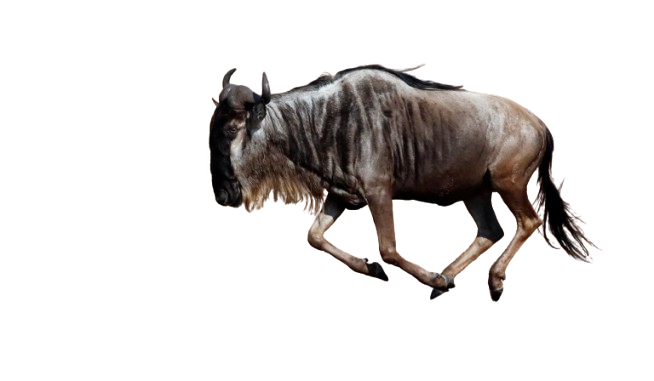Lions in Serengeti National Park
It’s not by accident that Seronera, the central part of the Serengeti, is the Big Cat Capital of the world. For those who’ve been there, they appreciate daily sightings of lion, leopard, and cheetah every moment they go on a game drive. However, there’s more to know about these giant, maned predators, and of course, the kings of the African jungle.
If we trace back to the heyday of trophy hunting, we find lions were the biggest targets. Why? Because every time a hunter killed were a ‘hero.’ And because of lions, the Serengeti became a game reserve, a milestone that made the Serengeti National Park we have today. Lions are very special in the Serengeti, and in this article, we feature the lions of the Serengeti, where and when to spot them. Let’s get right into it.
Let’s put it right. Tanzania holds the largest lion population worldwide, with its park, the Serengeti, hosting the largest population of lions of all parks in the world. There’s a guarantee to see a lion whenever you’re in this world-famous park, as long as you drive across the endless plains.
How many lions are there?
About 4,000 lions are in Serengeti National Park. These predators continue the ancient rhythm of predator and prey, and usually patrol the vast plains to look for prey. These strong predators live in groups of up to 15-20 individuals, usually consisting of adult males and females and cubs.
Male lions are strong, with reddish-brown or darker manes. They may appear polite, but they are extremely dangerous when they charge. They aren’t good at hunting like lionesses since their role is to protect their territory. Whenever a lion crosses another pride’s territory, fights may happen. However, some strong-maned lions often rule a wider area, or even the whole park.
Bob Junior, a Serengeti male lion, had the privilege of commanding the plains for years. He was so strong that he didn’t lose a fight. But in 2023, two lions challenged Bob Junior at his older age. That was the last fight. It ended with a victory for the two lions and the death of the famous Bob Junior lion king.
Lions can live 14 to 25 years. However, seeing an old lion in the Serengeti is a special treat. They don’t accept defeat in their lifetime. They always die in fights for mating and when protecting their territory. Copulation in lions is just a blink of seconds: it only lasts for 20 seconds.
The common prey animals for lions are zebra, wildebeest, topi, hartebeest, and Thomson’s and Grant’s gazelle. Females may hunt alone or collaboratively (when hunting big game like buffalo). They stalk their prey until they’re close, then launch a quick, strong attack. If not successful, a high-speed chase follows.
Where to see lions in the Serengeti?
The central Serengeti is the best place to see lions. As we mentioned earlier, this harbors the largest number of big cats. Lions are sparsely spread in the Seronera Valley, south-central of the Serengeti, especially in kopjes dotting the plains. In these rock outcrops, they obtain shade and use them as vantage points to scan prey.
You can also encounter lions in other places within the park. The Lobo Valley in northcentral Serengeti is home to lions. In addition, the southeastern plains near the exclusive accommodation, Namiri Plains, are also home to large lion prides. Other places to spot lions include Grumeti, Kogatende, and Moru Kopje (rock outcrops in the southwest of Seronera).
Practical tips for viewing lions
While viewing these lethal predators, it’s important to always switch our safe mode on. They may look innocent and inviting, but a wild animal isn’t a pet. Here are some tips to follow when viewing lions:
Stay in the car unless the guide tells you it’s safe. Even when furious, lions rarely attack vehicles. So, your safest place to be when watching is in the vehicle.
Avoid the cubs at all costs. Watching young animals is amazing. It may remind you of your dog back home. But playing with lion cubs is dangerous. Any time they cry for help, their mother steps in to attack the stranger.
Keep a distance from the pride. Going too close spikes their protective instincts. They may start preparing to attack before you even know it.
When should I come to see lions in the Serengeti?
You can see lions year-round, especially in the Seronera. But driving is more comfortable in the drier months, which run from June to October. It’s easier to spot wildlife in general, since the grass is short and water is scarce. Therefore, lions do not disperse much to find prey.
However, this season coincides with the high season. In unusual cases, you may be sharing a lion sighting with a pack of 10 safari vehicles. Plus, high rates in lodges and camps, this might be a tough experience if you’re on a budget.
Another best time for viewing lions that many guests overlook is from January to March in the southern Serengeti plains and Ndutu. As these fertile grazing grounds welcome over 500,000 calves in three months, lions congregate there to take down newborns or tired mothers. However, it’s not an easy task; it’s a battle for survival.
Final word
Serengeti has made dreams possible. Seeing lions in their natural habitat is often a gift to your lifetime adventure in Tanzania. As our seasoned guides take you around the Serengeti, you’ll realize that it’s possible to tick off even the Big Five list. And there’s much to expect, especially with a myriad of accommodations offering luxury and nature, all rolled into one.
Are you ready to watch lions along with wildebeest herds or massive land animals? We are just a call away from starting your plan.
